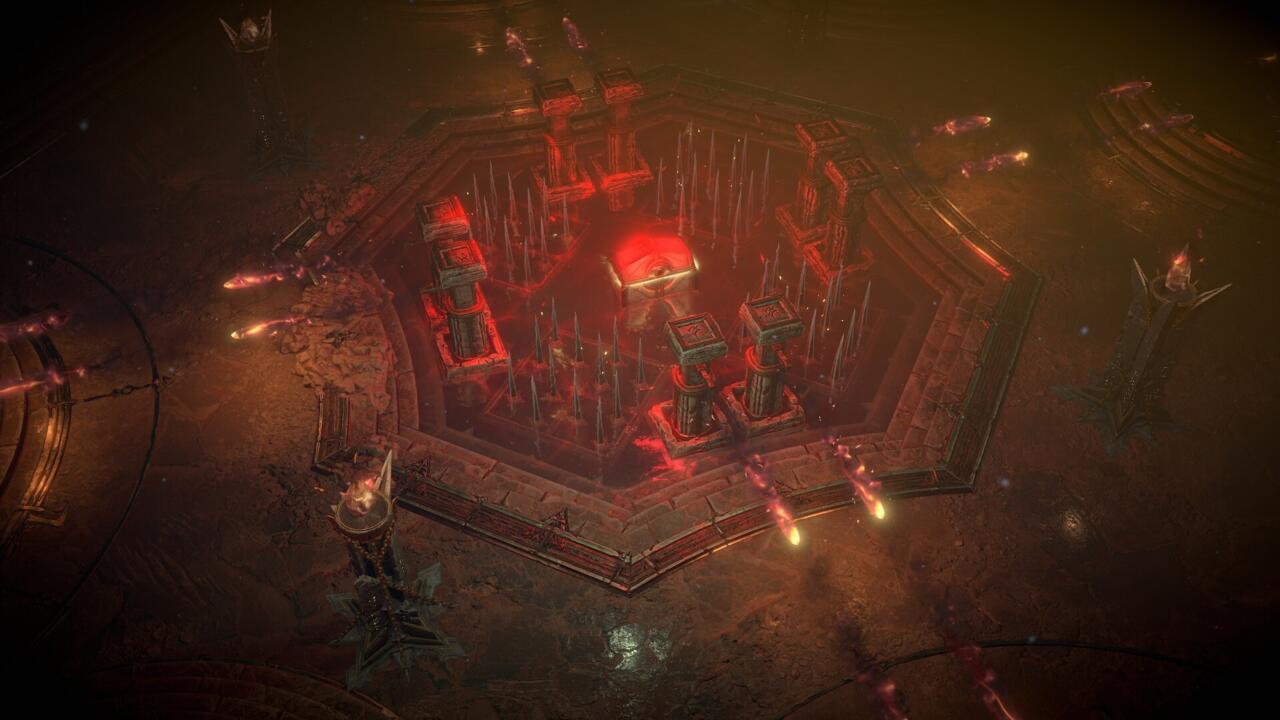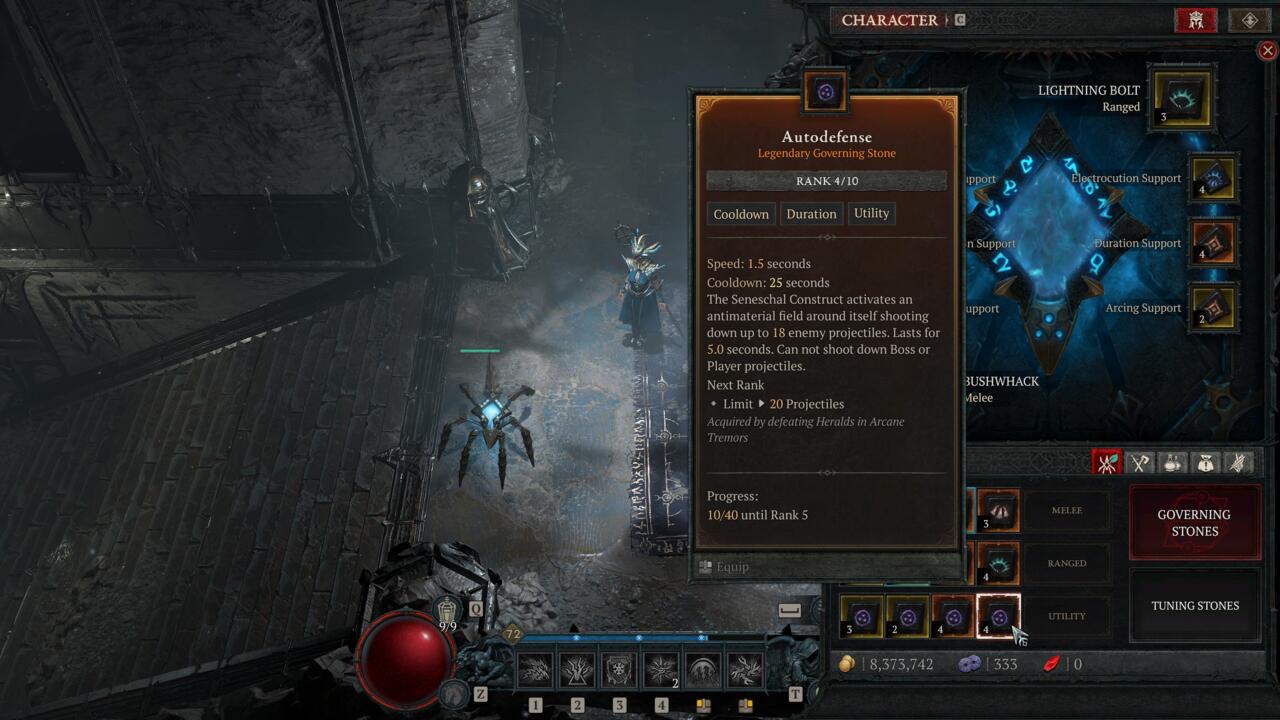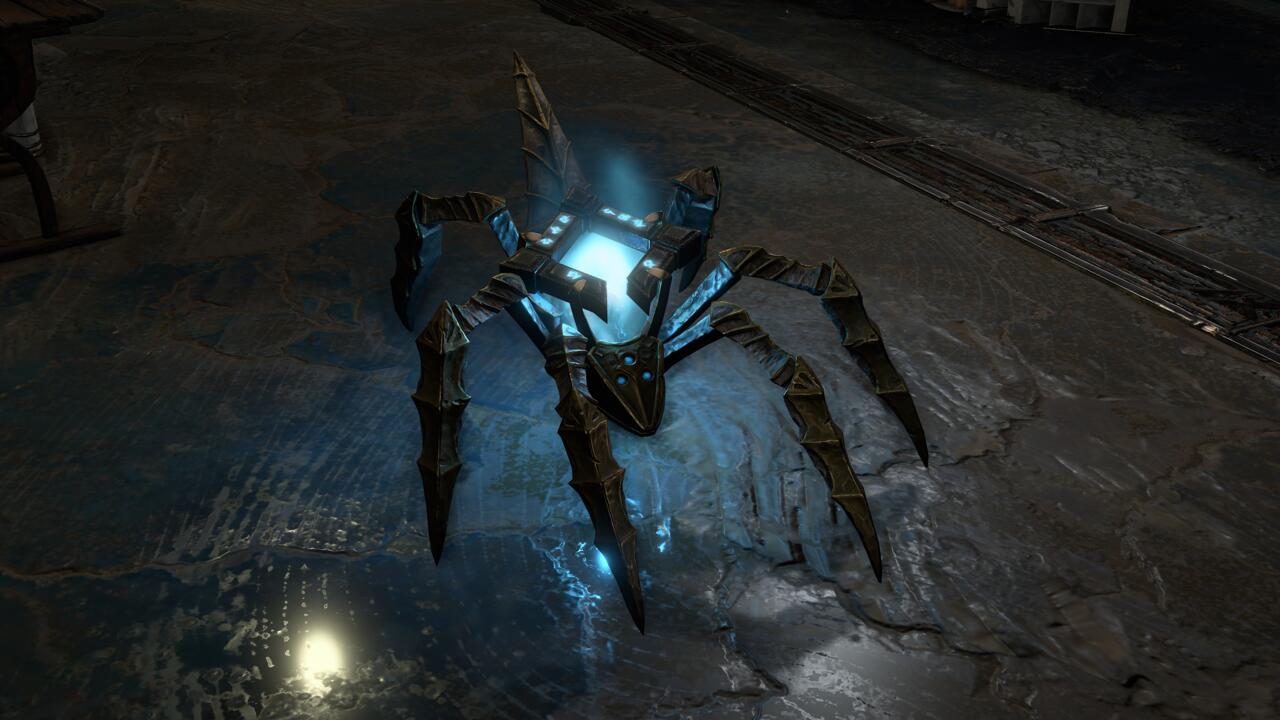Don't miss our holiday offer - 20% OFF!
How Diablo 4 Season 3’s New Trap-Filled Vaults Encourage Players To Take Their Time
Diablo 4 Season 3 is set to majorly shake up Blizzard’s popular ARPG with the introduction of a new endgame activity that will incentivize players to do something that just might sound like sacrilege: slow down.
Speaking with some of the key minds at Blizzard responsible for Season of the Construct ahead of its launch on January 23, we learned more about some of the inspirations behind the season’s major new additions, like the customizable Seneschal Construct companion. We also dove into new details on how the season will flesh out the story of a fan-favorite character from Diablo 3 and how Season 3 will look to provide players more options when it comes to farming for Diablo 4’s endgame in the form of trap-filled Vaults that encourage players to play cautiously.
Season of the Construct will see players exploring deep beneath the sands of Kehjistan, in a mysterious ancient complex housing a powerful artifact, The Loom, that was once intended to aid the people of Sanctuary but has since become corrupted by the terror demon, Malphas. To aid players in their quest to defeat Malphas and his army of corrupted constructs, they will acquire a spider-like robot of their own, the Seneschal Construct, and dive into dangerous treasure Vaults to earn rewards. All the while, players will learn more about the fallen Horadrim and architects of the underground facilities and its constructs, Zoltun Kulle, as well as his apprentice, Ayuzhan.
Vaults are a new activity coming in Season of the Construct, and unlike normal or Nightmare dungeons, which players have taken to clearing out as fast and efficiently as possible, will incentivize players to take their time instead of simply blasting through. That’s because Vaults are filled with deadly traps and hazards, things that weren’t much of a concern in Diablo 4’s base game or in previous seasons but make up a big part of Season of the Construct. Traps, and the idea of navigating dangerous, hazard-filled ruins filled with treasure, were among the first ideas for the new season, according to dungeon game designer Michelle Piña.
“As a dungeon designer, we’ve always wanted to expand on traps from the base game and everything, so this was a really good opportunity for us to tackle that,” Piña said. “It gave the dungeons team, specifically me and the season team, this new freedom of ‘What would Dance Dance Revolution look like in Diablo?’ Or ‘What would a platforming situation look like in Diablo?’ And this was kind of our way of dipping our toes in and seeing how players react to something pretty different from what we’ve done before.”

Asking players to slow down in order to avoid traps when they are accustomed to zooming through dungeons as quickly as they can is a tall ask, something Piña and the team seemed more than aware of. The key, Piña said, was to make sure Vaults were efficient when it came to being a farmable endgame activity while also offering a new playstyle, with the goal being to find the right balance between “the amount of time I’m spending for the reward I’m getting.”
The solution the team decided upon is a new mechanic, Zoltun’s Warding. By exchanging special items at the beginning of a Vault that can be found by participating in seasonal activities, players can earn stacks of Zoltun’s Warding. Each time a player is hit by a trap or hazard, they lose a stack of the buff. The trick, then, is to complete the Vault with a certain number of stacks of Zoltun’s Warding still remaining, which will grant players additional rewards to make it worth their time and effort. Like Nightmare dungeons, Vaults can also be upgraded to higher difficulties using Sigils, giving players yet another option for Diablo 4’s endgame. Vaults offer yet another way for players to show off their mastery of the game, systems game designer Sean White said.
“When it comes to mastering a thing that you’re doing, one form of mastery is zooming through the dungeon, absolutely,” White said. “Players really like doing that and we reward players for doing that. Another form of mastery is playing cautiously, carefully. It’s very much the difference between speed farming and pushing super high-end dungeons. You have to play two different styles there, and we want to reward as many different styles as possible.”
To aid players in their quest to defeat Malphas and his army of corrupted constructs, players will acquire a spider-like robot to call their own, the Seneschal Construct. This companion can’t be killed and can be equipped with two core abilities, called Governing Stones, and six ability modifiers (three for each Governing Stone) called Tuning Stones. By mixing, matching, and upgrading these stones, which can be acquired from seasonal activities like Vaults and the Arcane Tremors that arise near their entrances, players can fine-tune their construct to either dish out demonic destruction on its own or play more of a support role. Regardless of which playstyle players choose, the Seneschal Construct will use its abilities automatically and doesn’t need to be micromanaged. It also scales 1:1 with a player’s stats, growing more powerful as they do, making the robotic companion a force to be reckoned with as players continue to grow stronger. Since it already scales 1:1 with players, the construct doesn’t gain any specific advantages when used with pet-focused classes like the Necromancer, but can either add to a players pet-army or fill more of a support role.

Diablo as a franchise, of course, is no stranger to NPC companion characters. Diablo 2 featured various mercenaries players could recruit and equip with gear. Diablo 3’s followers were unique characters in their own right and could also be equipped with gear to improve their innate abilities. The Seneschal Construct takes inspiration from some of those earlier implementations of companions throughout the Diablo franchise, particularly Diablo 2’s mercenaries, according to White, but gives players more customization over its abilities than ever before.
“Typically when you have a companion or a pet, it doesn’t necessarily influence the way you play your own character,” White said. “The main difference here is the Construct will. The Construct can complement your existing build, support your existing build, or deal damage in and of itself because the Construct, it can do some damage. I’m very, very curious to see, and excited to see, what players end up doing with it considering how many different levels of customization there are.”
White gave an example of equipping the construct with a basic lightning bolt Governing Stone, but then modifying it with Tuning Stones that grant the ability multishot and the power to both pierce and home in on enemies.
“You’ve taken this very simple ability, lightning bolt, and you’ve turned it into this screen-clearing ability which can now clear entire rooms,” White said. “That kind of illustrates the power of the Governing and Tuning Stones.”


Season 3’s Vaults and Seneschal Construct may be the main ways Diablo 4’s latest season is looking to break new ground, but the same can be said of the season’s villain, Malphas, and a new seasonal hub town, The Gatehall. Described as a formless demon that can possess objects rather than the up-close-and-personal types of demons players are accustomed to dealing with, Malphas will be a major presence throughout the seasonal questline, according to lead artist Andy Lomerson. The end of the season’s storyline will culminate in a new boss battle against a massive, stationary construct Malphas has possessed, one that wields elemental attacks and various traps to dish out death to players. Players will need to interact with the arena to force Malphas in and out of his elemental phases, as the longer he is in one, the more damage he will deal.
The Gatehall, too, looks to offer something new. For the first time in a Diablo 4 season, players will have a new hub town to call home, where all the game’s usual vendors, as well as new seasonal vendors, can be found. The Gatehall will change and expand as players progress through the story of Season 3.
“It’s really integral to the questline,” Lomerson said. “You’ll find it when it’s abandoned and have your Indiana Jones moment, where you’re researching this old facility and then bringing it back to life…it becomes this thing that becomes more and more useful to the player as the quest goes on, and hopefully you’ll want to keep visiting it for the entire length of the season, because it is such a cool place.”
Blizzard is fully on the live-service train with Diablo 4, and much of the game’s seasonal success relies on what new ideas it can bring to the table in order to entice players to return to the world of Sanctuary and create a new character. Will treasure rooms filled with loot locked behind all manner of death-dealing traps and a robotic friend be enough to bring players back for Season 3? Blizzard certainly hopes so, but it definitely can’t hurt to give players another option like Vaults when it comes to grinding through Diablo 4’s endgame, even if what the activity asks of players is a bit different from what they might be used to.

